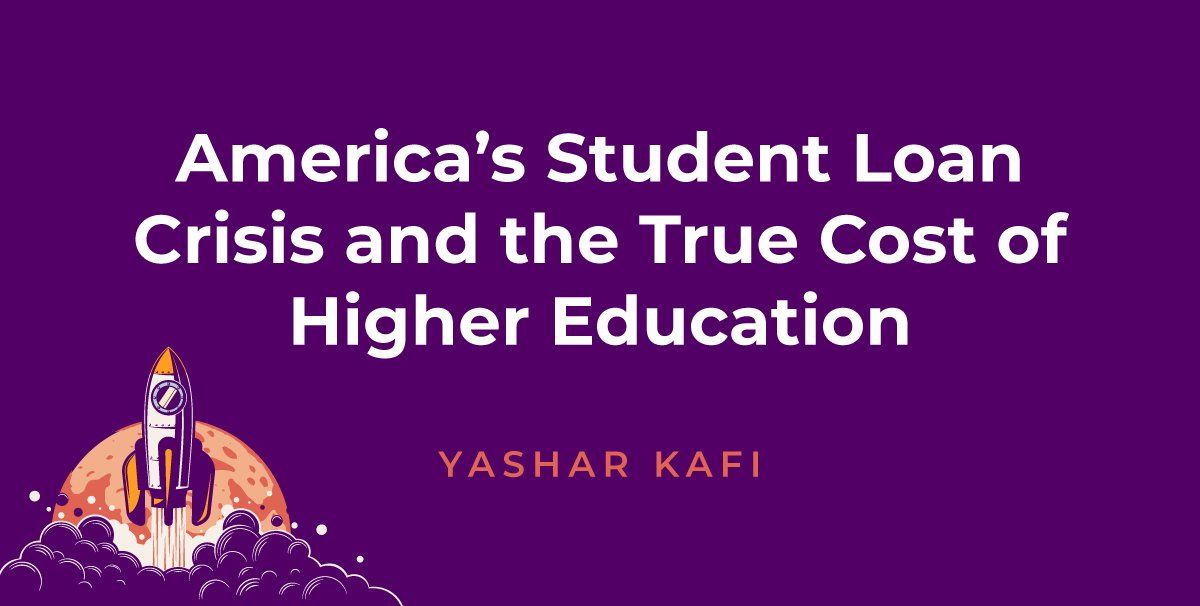America’s Student Loan Crisis and the True Cost of Higher Education
Take a moment and Google “US student loans.” You will find the entire top half of your page filled with results of numerous organizations trying to give you money. Seems awesome, right? Not so fast…
Scroll down just a bit further, and you will start to see the scary stats—stats that reveal that there is a dark side lurking behind all this “easy money” being so generously offered. You’ve heard the adage “It’s not all it´s cracked up to be” or “Things are not always as they seem?”
For instance, according to Wikipedia, as of July 2021 there was over 1.7 trillion dollars in student loan debt in the United States alone. More bad news: Canada doesn’t seem to be faring much better, as even with partial socialism and government subsidized tuition, a reported one out of six bankruptcies were caused by student loans. What we are facing now has even been officially termed a student loan crisis, and we’re allowing it to continue to get worse.
We see evidence of this all around us, the current dismal state of the job market included (the unemployment rate rose to an alarming 6.1% this year). With this staggering statistic in mind, one has to wonder: Is it really necessary to go into a huge amount of debt via student loans, only to come out of college and be unable to find a job to earn enough to begin paying back that debt immediately?
I think of wildly successful entrepreneur Gary Vee, who is among a growing number of other entrepreneurs who are doing what they love—and making a tons of money by the way— without college (or the accompanying loans that go with it).
Now, this may seem like a no-brainer, to go directly into the job market and forego burying yourself in a pile of student loan debt. However, there is a camp that will inevitably question the wisdom of this route. These folks ask a valid question. Is it responsible to send our children out into the world without some sort of formal education?
Only each individual can answer this for themselves and their children, ultimately, but it is a relevant and important discussion to have, especially today. Don’t get me wrong, I am not knocking formal education, but what I am saying is that just like everything, education needs to adapt to be more useful (and less financially crippling!) in the evolving world.
To reiterate: Education will always have a place, but what we need to be learning has changed immensely. We need to prepare people with the skills they need in today’s world, and we need to find a way to do it without charging them a small fortune that they will spend a good majority of the rest of their lives paying off. It is akin to the outdated 40-hour work week model.
In summary, even though acquiring student loan debt has become a normal part of our societal expectations over the years, these days a four-year college degree doesn’t necessarily guarantee a lucrative career upon graduation. So, something’s gotta give.
While there is no one cookie cutter answer, and every individual must decide for themselves what is best, this article has hopefully stirred some questions and provided much food for thought. Are apprenticeships the answer, providing an attractive alternative for students who want to learn in-demand skills and graduate debt-free? Or something else? You be the judge. There is no “right” answer, but if you are determined to go the student loan and formal collage route, my advice is to start saving your pennies.




